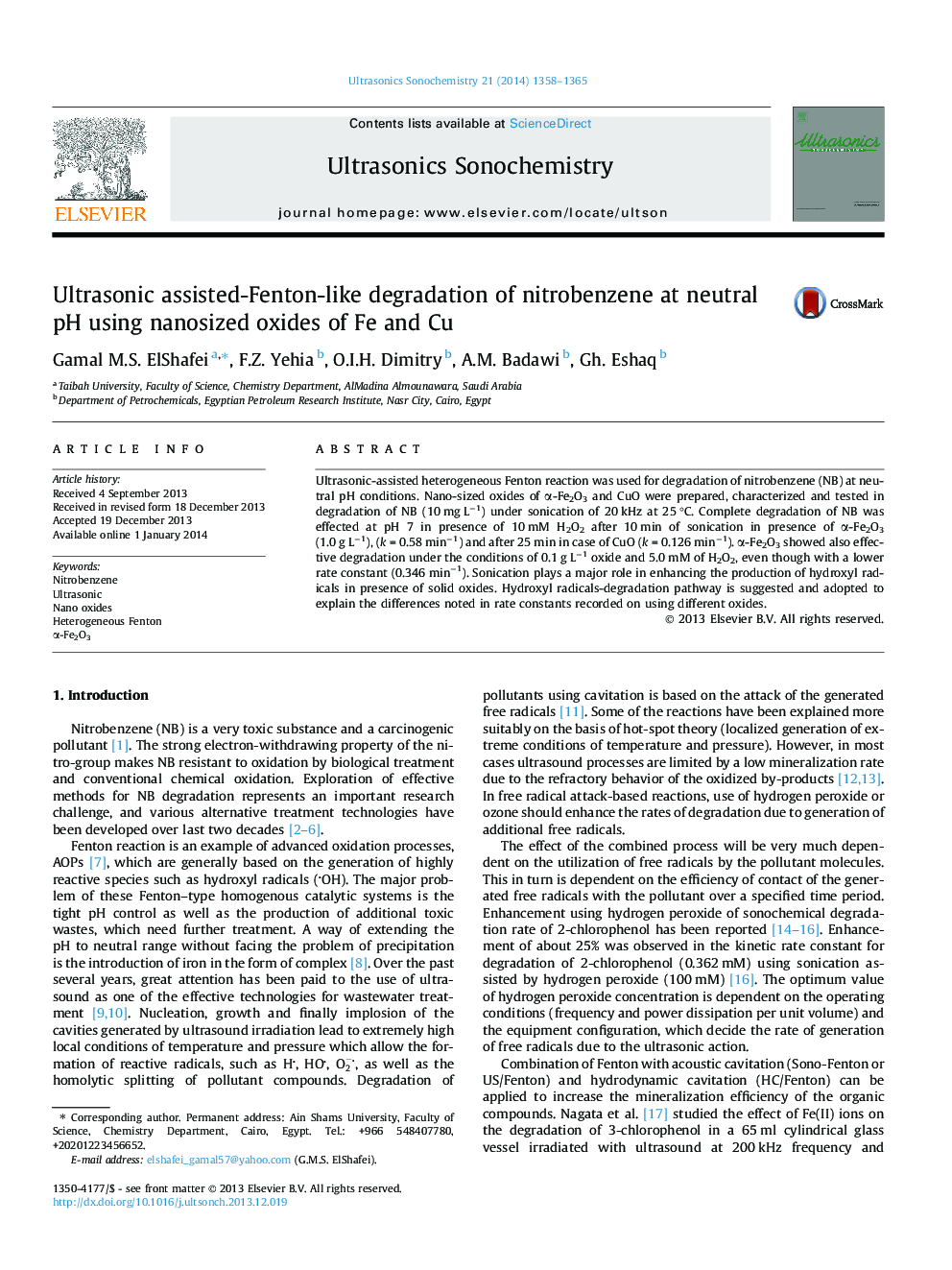| Article ID | Journal | Published Year | Pages | File Type |
|---|---|---|---|---|
| 1268966 | Ultrasonics Sonochemistry | 2014 | 8 Pages |
•Ultrasonic irradiation at 20 kHz cannot degrade 10 mg L−1 of NB at pH 7.•US/nano α-Fe2O3 or CuO systems show higher efficiency.•Complete degradation is effected using US/nano oxide/H2O2.•α-Fe2O3 required only 10 min of sonication, while CuO needs 25 min.•Ultrasonic enhances the activity of α-Fe2O3 in Fenton-like reaction.
Ultrasonic-assisted heterogeneous Fenton reaction was used for degradation of nitrobenzene (NB) at neutral pH conditions. Nano-sized oxides of α-Fe2O3 and CuO were prepared, characterized and tested in degradation of NB (10 mg L−1) under sonication of 20 kHz at 25 °C. Complete degradation of NB was effected at pH 7 in presence of 10 mM H2O2 after 10 min of sonication in presence of α-Fe2O3 (1.0 g L−1), (k = 0.58 min−1) and after 25 min in case of CuO (k = 0.126 min−1). α-Fe2O3 showed also effective degradation under the conditions of 0.1 g L−1 oxide and 5.0 mM of H2O2, even though with a lower rate constant (0.346 min−1). Sonication plays a major role in enhancing the production of hydroxyl radicals in presence of solid oxides. Hydroxyl radicals-degradation pathway is suggested and adopted to explain the differences noted in rate constants recorded on using different oxides.
